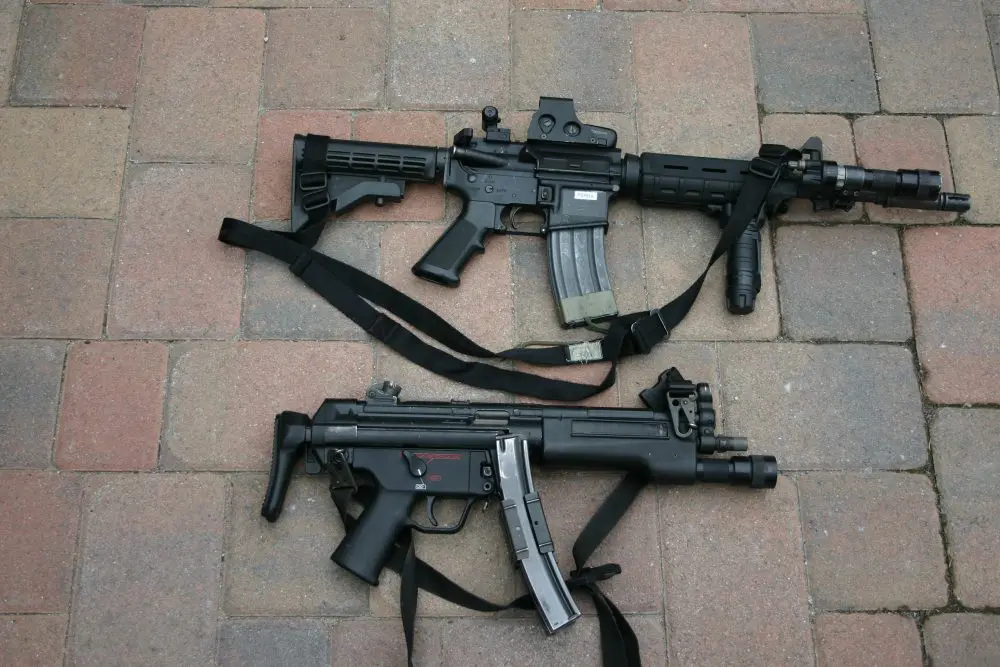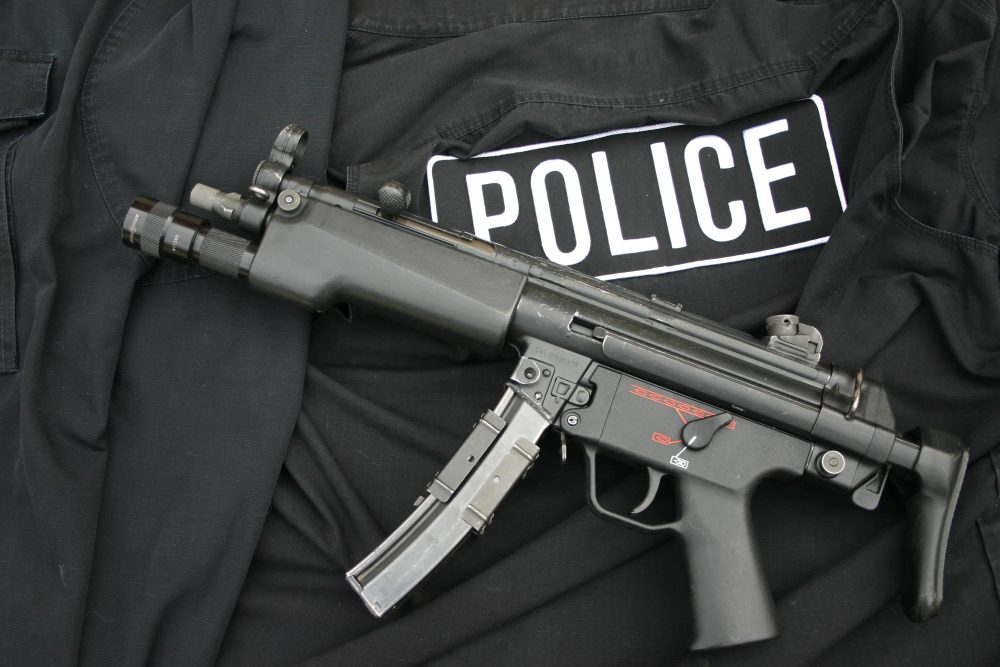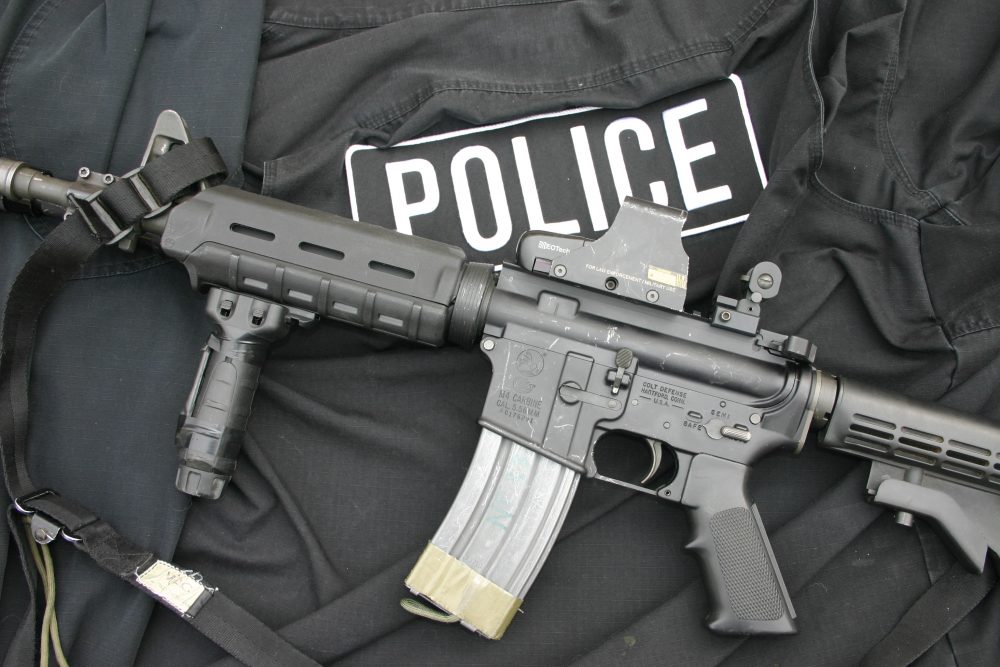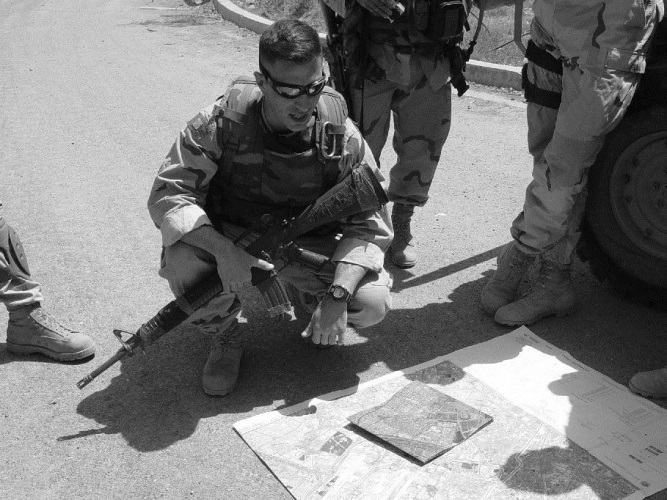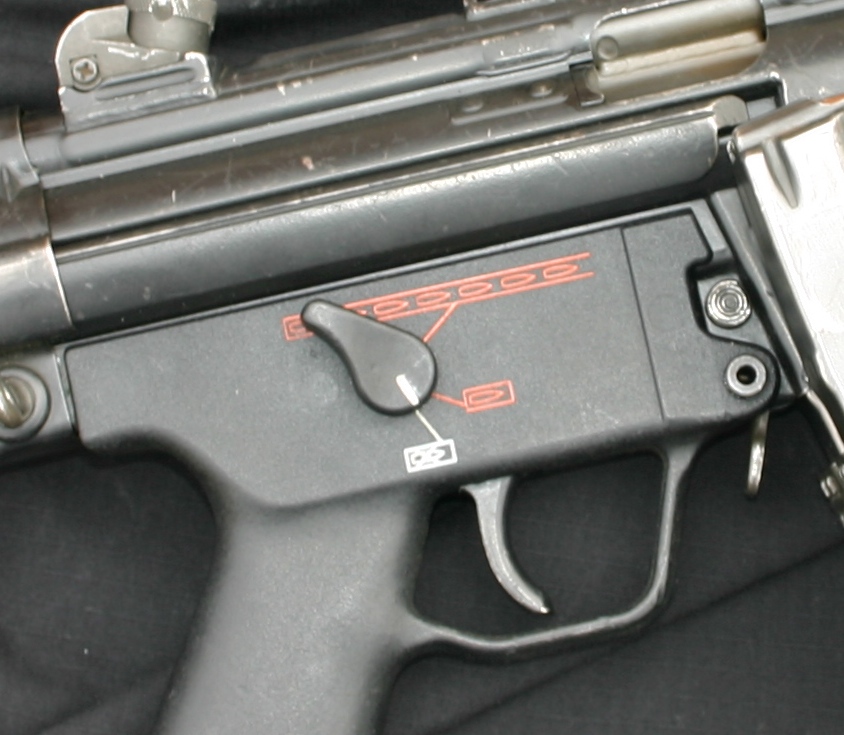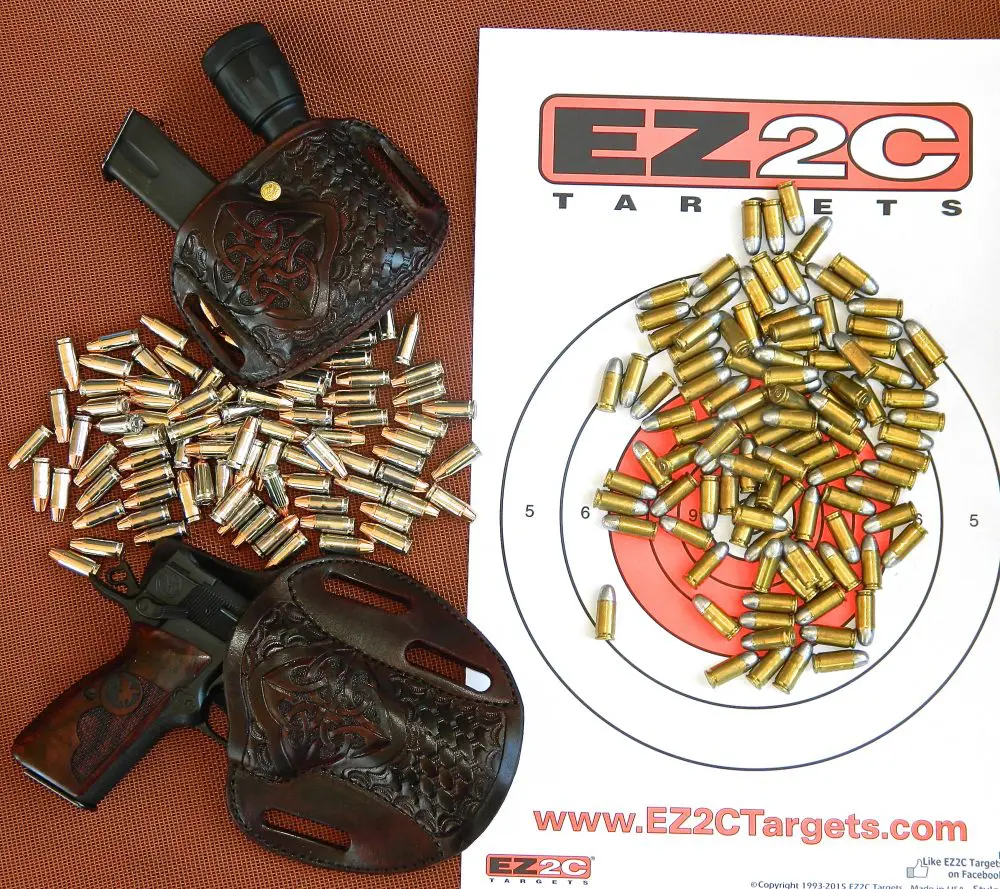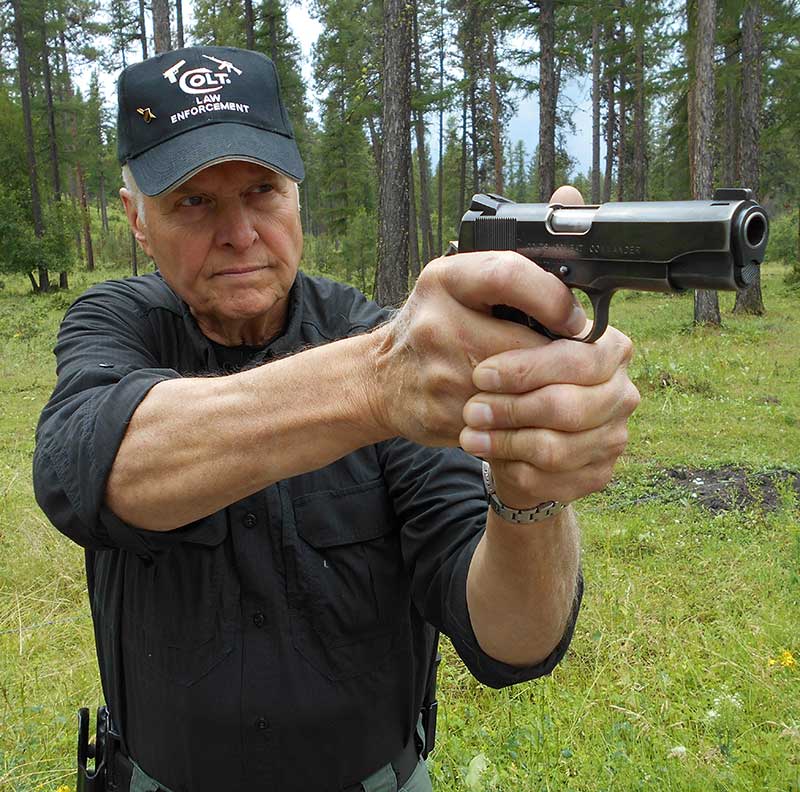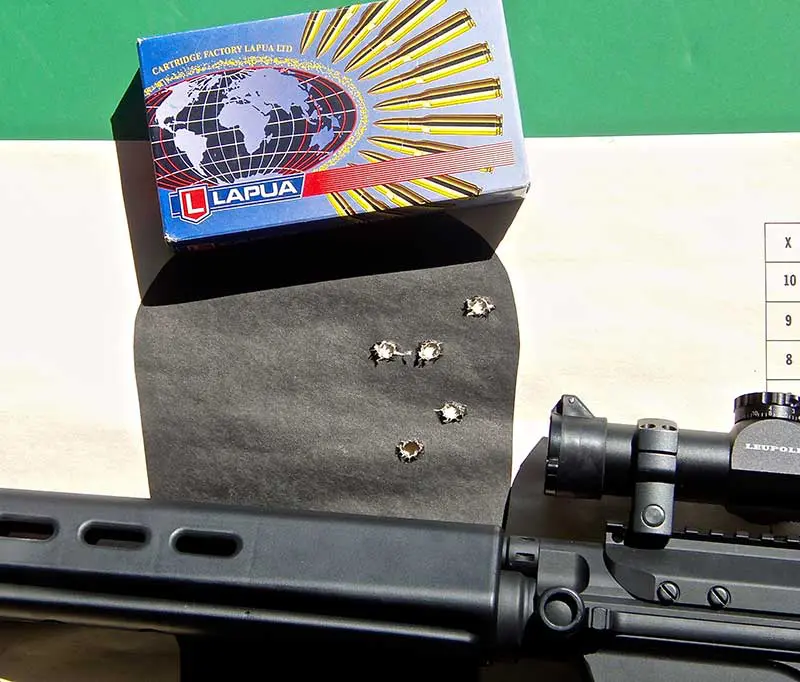About 20 years ago, I was an Army ROTC cadet attending pre-officer training at Ft. Lewis, Washington. We were at an impact area watching a demonstration of different types of artillery that the U.S. Army had in its inventory. The weapons being demonstrated were the 105mm Howitzer and the 155mm Howitzer. The 105mm is a smaller caliber weapon (compared to the 155mm), but has the advantages of being more transportable and having a higher rate of fire. The 155mm is a behemoth, big and heavy, but with a very robust round.
Both M4 and MP5 have pros and cons.
As the demonstration began, two lieutenants addressed the crowd. The lieutenant in charge of the 155 looked like an offensive lineman, large in stature with a deep voice. His 105 counterpart, on the other hand, was about the size of a jockey with a squeaky voice. For an organization not officially known for its sense of humor, I had to give the Army credit for casting the two lieutenants in their respective roles.
As the demonstration began, the 105 rapidly outpaced the 155: “Boom, boom, boom, boom!” But the 155 made up in explosive power what it lacked in speed: “BOOM … BOOM!”
Both weapon systems had distinct advantages in a head-to-head comparison. This is often the case with different weapons designed to fulfill essentially the same function.
Author prefers MP5 if operating in cramped spaces.
Table of Contents
FROM MIL TO LE AND BACK AGAIN
Thirteen years ago, I was a new member of my agency’s SWAT team. I was issued the long gun of choice at the time—an H&K MP5 in 9mm. The MP5 was the go-to gun for SWAT teams and military special operators for close quarters battle. I quickly became adept at handling and shooting the MP5 and found it to be perfectly suited to my needs as an entry team member.
As time progressed, there was a philosophical shift in the tactical world in regard to what type of long gun tactical teams should use. This was brought on by the highly publicized 1997 LAPD Bank of America shootout, where the bad guys wore body armor, and by engagements that were at longer distances than law enforcement was used to.
Departments nationwide began to acquire and issue rifles, primarily M4s and AR-15s, to their tactical teams. On the military side a few years later in Afghanistan and Iraq, soldiers were engaging targets at longer ranges, at which submachine guns were even less effective.
I deployed to Iraq as an Army reservist in 2003. There I carried an M16A2, the M4’s older, bigger brother. When I got back to my department, I was issued a Colt M4 to replace my MP5. Having carried an AR-type weapon for most of my adult life in the Army, I was delighted. My SWAT team went to the range and spent the day shooting steel at ranges up to 300 yards; hard to do with a 9mm.
If distance and defeating a bad guy’s body armor are concerns, M4 is hands-down winner.
FREEDOM OF CHOICE
For the next ten years, guys on my team were issued both weapons and could carry the one they wanted. Initially we all carried the M4. We appreciated the greater power the .223 round provided, including the fact that it allowed us the ability to deal with suspects wearing body armor.
But in the past couple of years, an interesting thing happened. Some of the guys chose to hang up their M4s and carry the venerable MP5 instead. At first it was some of the older guys who’d carried it before we got the M4s, especially the ones who’d been through Heckler & Koch’s MP5 Master Instructor Course.
I still carried my M4 on SWAT operations, but I chose to use my MP5 at other times. In my agency, SWAT is a part-time assignment and my full-time assignment was in a street crime team designed to combat street gangs and drug dealers.
I preferred the MP5 with its retractable stock because it was easy to conceal when in an unmarked car and to deploy from a vehicle with. For the most part, the threats I dealt with were at short distances where the 9mm was more than adequate. I carried it with a double-stack magazine held together with a coupler, giving me 60 rounds at my disposal.
Author carrying M16A2 on a raid in Iraq.
DOING THE SAME JOB DIFFERENTLY
Like the 105 and 155 Howitzers, the MP5 and M4 are weapons designed to do the same thing, but in different ways. Both weapon systems are superb and have stood the test of time. In the case of the MP5 and M4, which one is better for tactical operations?
There are many variants of both weapons out there but, to keep it simple, I’ll go with what I know. As mentioned previously, my MP5 is a 9mm with retractable stock. It has a SureFire forend with built-in illumination, and issue sights. My M4 is a Colt with 16-inch barrel. I put a Magpul forend/foregrip on it, and it sports an older-generation EOTech.
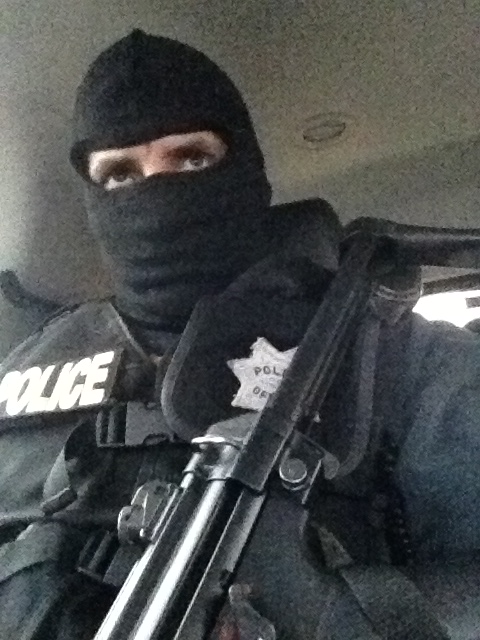
LETHALITY
In terms of lethality, the .223 is superior to the 9mm, hands down. The .223 has undeservedly gotten some bad press. During the global War On Terror, it received a reputation for lacking knockdown power, but much of that had to do with the Geneva Convention-compliant fully jacketed “green tip” rounds the military is required to use. These issues are exacerbated by using shorter barrels and not taking into account ammunition internal ballistics and how they relate to rifling twist rates and barrel lengths.
The 9mm is a good round, but I feel it is the bare minimum for CQB operations. As a cop, I’ve seen plenty of crooks hit by 9mm rounds who recovered and went on to lead successful criminal lives. In fairness, H&K makes the MP5 in .40 S&W and 10mm. Regardless, I feel the .223 is superior.
Another advantage of the .223 is fewer issues with overpenetration, especially when using frangible rounds.
SIGHTS
The MP5 sighting system is simple and effective. The front post sight isn’t adjustable. The rear sight has four settings, which are basically nothing more than four circles of varying sizes to use at different ranges. It’s utterly simple and extremely effective, even out past 50 yards. It’s such a good system that I prefer it over mounting an optic on it.
I’m not a big fan of standard M4 sights. The rear sight is adequate. It’s the front sight I take issue with. The open posts that protect the front sight can be mistaken for the front sight itself during a high-stress situation—like when somebody is shooting at you. The uncovered front sight can get bent, and making front sight adjustments is a pain in the butt.
Granted, the M4 sights are designed for a weapon that potentially could be used to engage targets at hundreds of yards, while the MP5 sight is primarily for short-range engagements, but either way I prefer the MP5. The one saving grace with an M4 is the ease of mounting optics on flat-top receivers.
ERGONOMICS/MANIPULATION
In terms of ergonomics, I have to go with the MP5. It has a large ambidextrous selector switch coupled with two magazine releases (one on the trigger guard and another next to the magazine well) and an easily manipulated bolt operated by a slap of the support hand.
A standard M4 has a right-hand-only selector switch. I have to admit some bias here. I’m left handed, so I prefer to have selector controls on the left hand (although I’ve become adept over the years using the standard selector). But as any good operator will tell you, you need to be able to use your weapon with both your strong and support sides. A non-ambidextrous selector switch makes this difficult.
My biggest bone of contention with the M4 is the location of the charging handle. Ergonomically, it makes no sense. It’s hard to manipulate and requires an awkward support-hand movement to do so. Malfunctions can result if the operator doesn’t pull it all the way to the rear and let it go. It works best when the bolt is locked back and the bolt release is used, which only occurs when you’re out of ammo or if you physically lock it back.
MODULARITY
The M4 is the clear leader in this category. There is a seemingly endless option of sights, stocks, barrels, pistol grips, vertical foregrips, handguards, flash suppressors, compensators, and other items for the weapon. You can configure it a million different ways, ranging from a petite PDW (personal defense weapon) to a heavy-barreled Designated Marksman Weapon.
CQB
In tight spaces such as aircraft, ships, and cluttered residences, an out-of-the-box MP5 is superior to its rifle-chambered counterpart. Bottom line, it’s more compact, making it easier to wield in a confined location. The M4 is a close second, especially with a vertical foregrip.
Ambidextrous safety lever is standard on MP5.
RANGE
An M4 is designed to engage man-sized targets with iron sights at ranges in excess of 500 yards—even more so with a magnified optic. The hottest of 9mm rounds just doesn’t have that kind of range.
MAINTENANCE/RELIABILITY
Both weapons are simple to clean and maintain. I’ve rarely seen a malfunction in an MP5, and the only ones I’ve seen in an M4 were from severe operator neglect. Both weapons can shoot thousands of rounds without being cleaned.
CONCLUSIONS
In the tactical weapons arena, there is no “jack of all trades.” For every advantage, there is often a disadvantage. Benefits offset shortcomings and vice-versa, with no clear winner.
If I’m going into a close-range fight within confined spaces, I opt for the MP5. In a battle that could end up going long range, I’ll take the M4.
If I could only pick one, by a very slim margin it would be the M4, with its advantages in distance and armor penetration—both potentially critical concerns.
Nick Perna is a Gang Detective with the Redwood City Police Department in northern California. He has been a member of a multi-jurisdictional SWAT team since 2001 and is currently a team leader and firearms instructor. He previously served as a paratrooper in the U.S. Army and is a veteran of Operation Iraqi Freedom.
